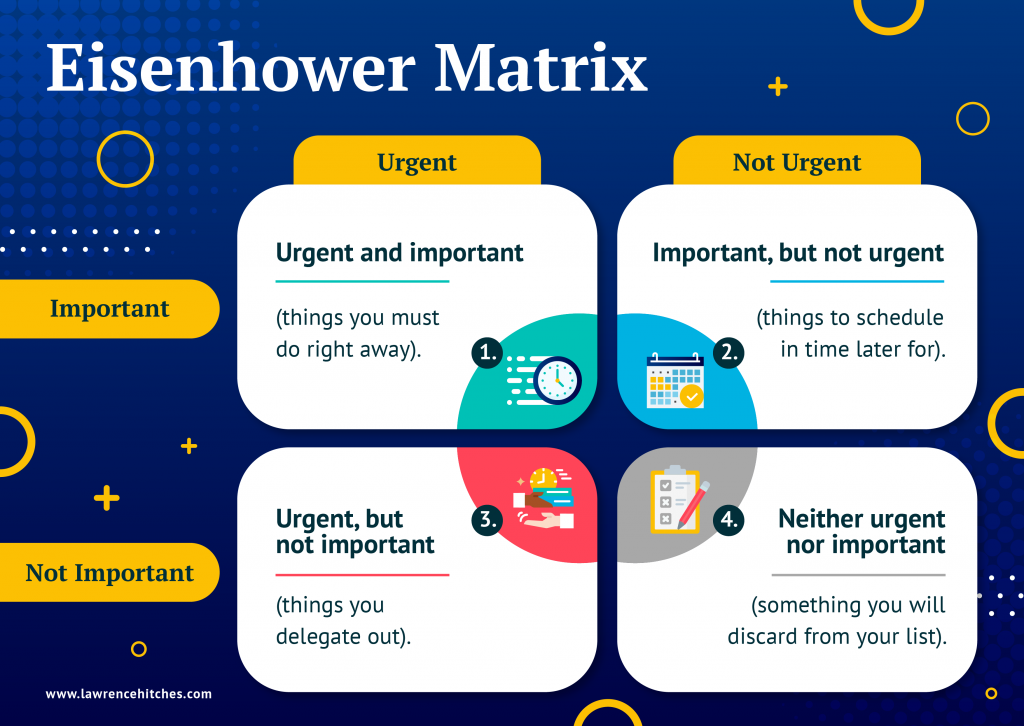There are so many things to do, so little time…
At some point in our lives, we all reach a productivity bottleneck.
We could feel overwhelmed with too many tasks, and there is no way out! How can you eliminate the feeling you have to work on a hundred different things at once?
What if I told you there is a way that is simple, easy to put into practice, and will make you a productivity machine?
That is called the “Productivity matrix,” “Eisenhower Matrix,” or productivity grid.
The productivity grid works as a productivity tool and decision-making principle; it helps you prioritize all your tasks (both work-related and personal) by urgency and importance.
Using this productivity grid, you will be able to identify the main goals you are trying to achieve throughout your life, then break down these goals into different tasks that can easily be accomplished and prioritize them according to their level of urgency.
Furthermore, the productivity grid helps determine if a task is necessary or not by asking itself, “will this task help achieve my life goals?”, if it does, then it belongs to the critical category.
On the other hand, if it doesn’t contribute to achieving your life goals, you can go ahead and feel free to discard it.
The famous Eisenhower’s quote describes the productivity grid:
“I have two kinds of problems, the urgent and the important. The urgent are not important, and the important are never urgent”.
-DWIGHT EISENHOWER
According to this quote, you should always focus on completing your most important task first to help you achieve your goals, making you more productive and successful.
Let’s go ahead and use this productivity principle as a decision-making tool:
Ike’s approach to taking action and organizing your tasks is straightforward. You may use the decision matrix below to distinguish your activities into four categories based on your options.

- Urgent and vital (things you must do right away).
- Important, but not urgent (things to schedule in time later for).
- Urgent, but not necessary (things you delegate to someone else).
- Neither urgent nor important (something you will discard from your list).
The difference between important and urgent tasks.
Urgent activities are time-sensitive and necessitate your attention. They’re things you feel compelled to deal with. Being occupied with pressing matters can make you feel defensive, rushed, and overly focused.
Significant work is essential to your long-term objective, beliefs, and goals. The things that will move the needle for the more powerful ideas. They may not provide immediate results (making them easy to overlook). Important tasks are sometimes also urgent — but not always. Putting your attention on essential activities allows you to be more responsive, which can help you feel calm, rational, and receptive to new ideas.
People are inclined to consider that all pressing matters are also important when frequently they are not. Humans prefer to deal with short-term difficulties and never devise solutions for the more enormous obstacles in life.
Why Use The Productivity Grid?
By segmenting tasks into these four quadrants, you can better understand what needs ticking off, now, later, or never. The never is a critical part of what the productive grid provides. As tasks come your way and come back to that core question, “will this task help achieve my life goals?” you’ll find many functions flow naturally into the delegation or discarding pile.
Thus you’re making a lot of time back for the Urgent and Important things in life!

Leave a Reply